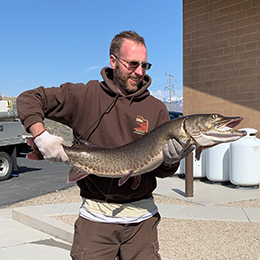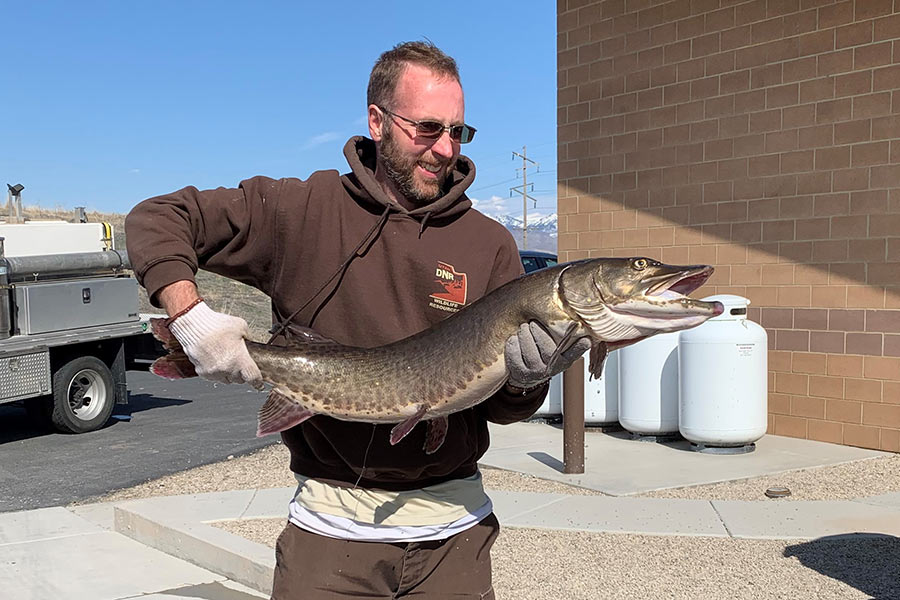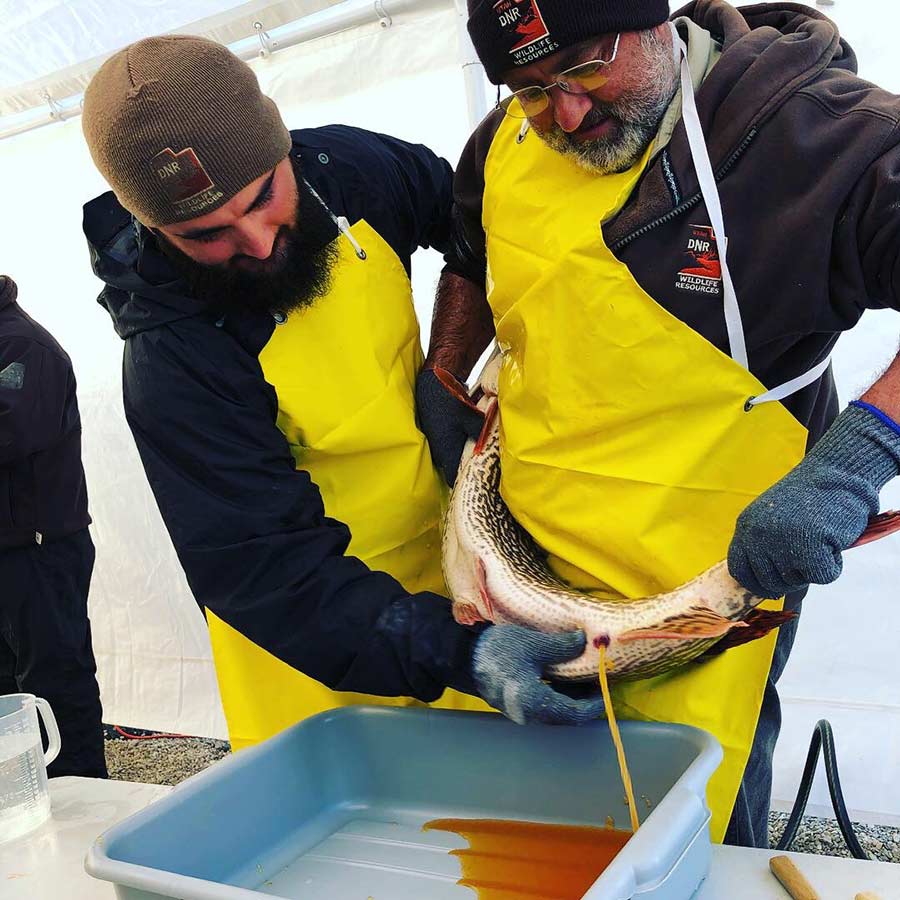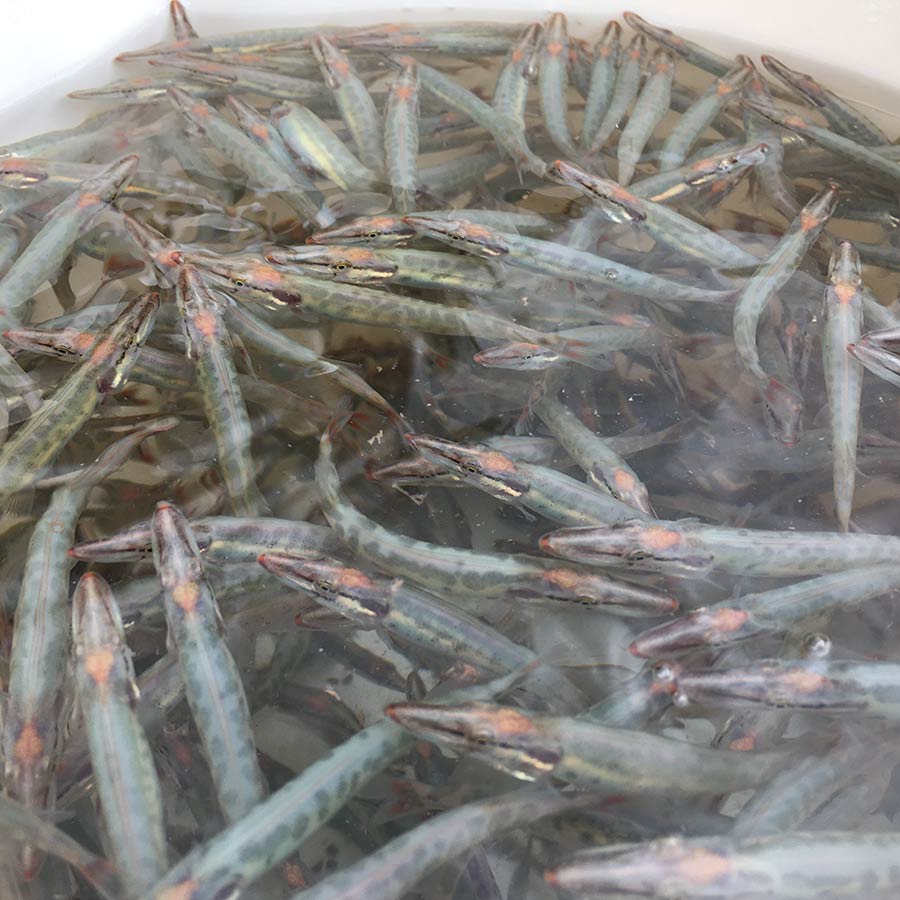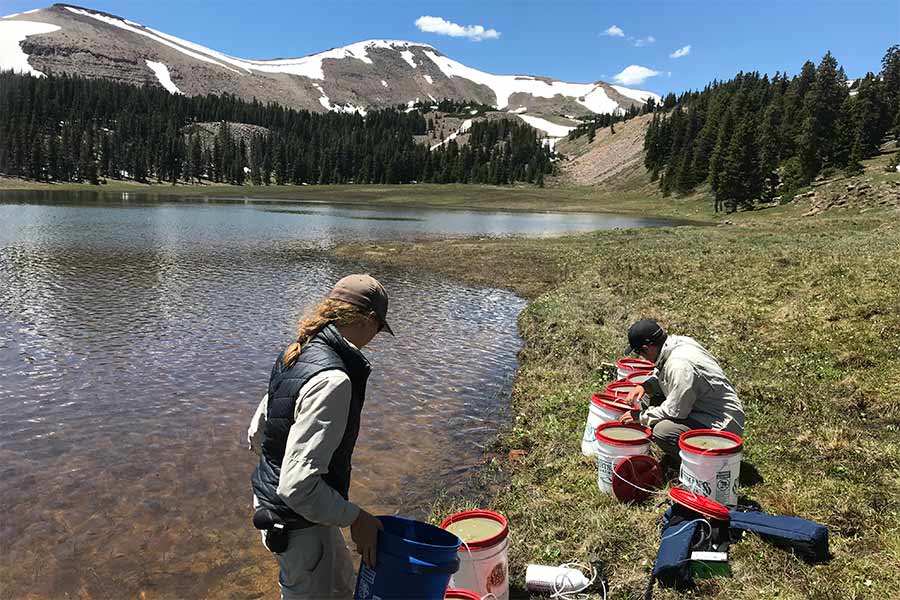Top 5 reasons to work in fish culture
Get the inside scoop on the fascinating field of aquaculture
By Chad Hill
DWR Supervisor
West Springville and Lee Kay fish hatcheries
Utah Division of Wildlife Resources fish hatchery supervisor Chad Hill has worked in the field of aquaculture for 17 years. We asked him to share some of his favorite things about working in fish culture in a wide variety of environments. It’s a challenging and interesting job!
Reason #1: Opportunity to learn hands-on skills
When I started working in a fish hatchery, I was amazed (and a little overwhelmed at first) by all the different kinds of random, day-to-day projects.
For example, the first day on the job I was put behind the seat of the biggest truck I'd ever driven and instructed to plow snow off the facility's driveway and parking lots. Not being from a snowy place, I was terrified that I would crash! It never occurred to me that driving a snowplow or a backhoe would be part of my regular job duties.
At a hatchery, we do a lot of the facility and equipment maintenance ourselves, so out of necessity we learn the basics of how to do a lot of things. Before taking this job, I had very little experience with this kind of hands-on work. I'm not saying I'm a pro at any of these things now, but I can do the basics. I've really enjoyed learning new skills.
Reason #2: Ever-changing variety of work
Building on my previous point, we get to work on a wide variety of projects.
I have office work and manual labor. I work in the hatchery lab, but also in the garage. There's physical work, brain work and we get out into nature regularly. There are routine chores, special projects and sometimes we build things.
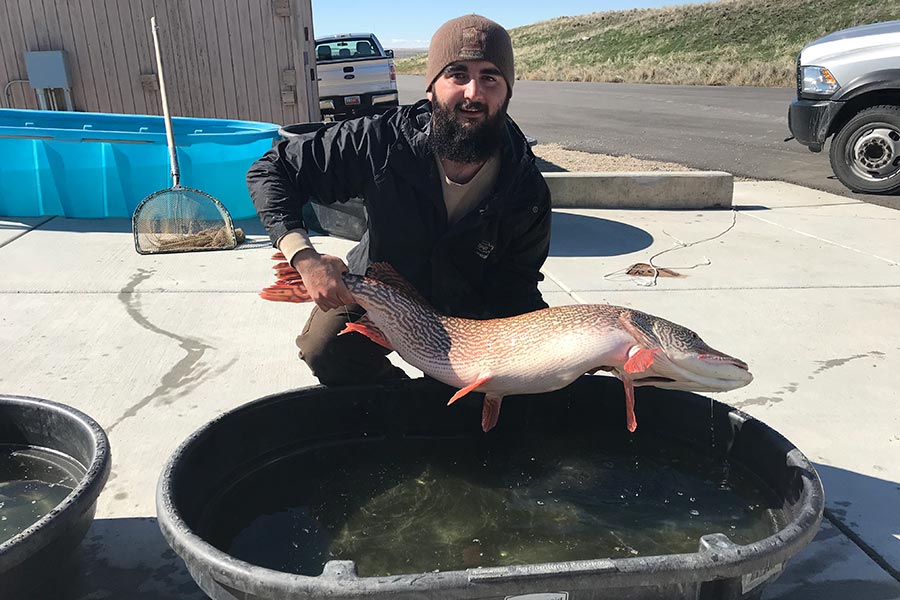
DWR fisheries pros cross northern pike (shown in this photo) and muskellunge to cultivate tiger muskie embryos.
We also help other hatcheries with their projects (like catfish, kokanee or spawns). Often, there's no right way to do something, so we use our creativity and put our own unique style into our work to figure out solutions to challenges.
In a warmwater hatchery like the Springville location, we go from project to project as the year goes on. Tiger muskie spawning season comes in, then walleye season, then the striped bass spawn and so on. It's pretty hard to get bored at a hatchery.
Reason #3: Creating life
In fish culture, we get to watch our fish go through all the phases of life. We spawn the fish and collect the eggs. Then, we watch the eggs develop and can see the growing embryo inside.
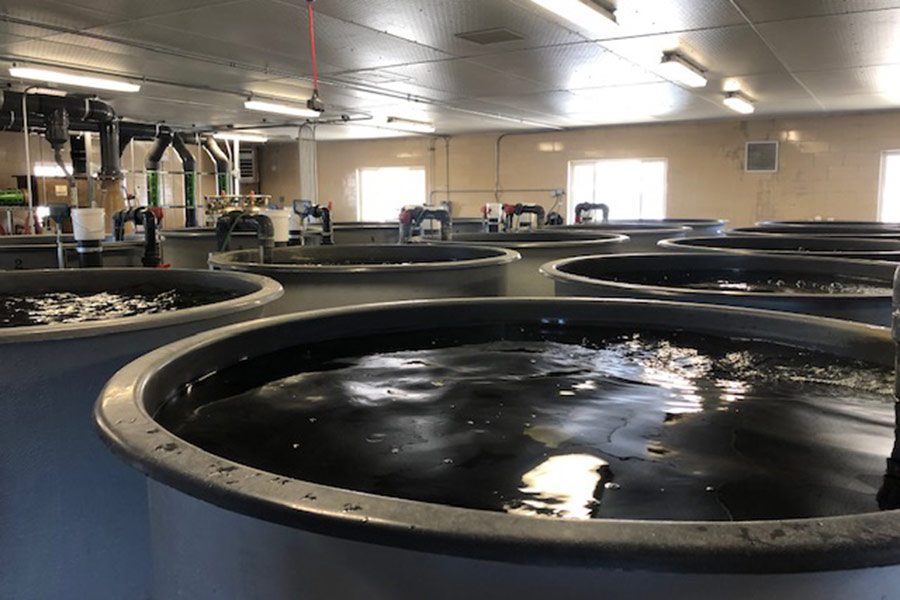
The recirculating water tanks at the Springville facility create a healthy environment to monitor, feed and grow newly-hatched fish.
When the eggs hatch, we care for the fish as they start to feed. Young fish need lots of cleaning — and frequent feedings — and we need to monitor carefully for signs of disease and treat them immediately if they get sick. It's fun to watch the fish grow until they are big enough to release into a wild environment.
It is a great responsibility to raise a quality fish for the anglers of our state, and it's exciting to be a part of the process. One of the best parts of the job is seeing the smiling faces of the public as they watch you release the fish you've spent months raising. I've actually had people stand up and applaud when I pulled up to a lake in a fish stocking truck!
Reason #4: New challenges
Several years ago, I made the switch from coldwater fish culture to warmwater fish culture. I felt that I needed a challenge, and boy, did I get it!
Raising warmwater fish like tiger muskie, walleye and wipers (hybrid striped bass) is quite different from coldwater trout culture. Instead of concrete raceways, we have outdoor ponds and high-tech buildings with recirculating systems. And instead of domesticated trout, we have wild fish that can bite! Trust me: You don't dangle a hand into a pond full of 40-inch muskellunge. Warm water means fast growth, so things happen quickly. Some of our fish are able to complete the process from spawning to stocking in a matter of weeks, rather than months. We have to constantly be on our toes.
We spawn northern pike (like the one in the photo on the left) to cross with muskellunge. The resulting tiger muskies (right photo) grow very quickly and are released in approved Utah waterbodies as a popular sportfish.
An additional challenge is the newness of this program. We've only been raising warmwater fish for a few years, so there is a lot to learn. It's a steep learning curve, but that's part of the fun. Right now, I have seven different kinds of fish to work with, each with its own unique requirements. The variety of species is a challenge, but it's also part of the excitement.
This is a program still in its infancy, and we're doing things that no other state is doing. We have a big vision and a long way to go.
Reason #5: Get outdoors
Working in a hatchery means working outdoors frequently. It keeps me in shape, and I get to see all kinds of wildlife — not just fish! — on a regular basis. There are always waterfowl in the ponds adjacent to the hatchery, and we have a fox that we see from time to time. We deliver fish to all corners of the state, so we get to know a lot of places that are off the beaten path. I've always said that the best part of fishing is that fish live in beautiful places. We are blessed to visit those places as part of our jobs.
